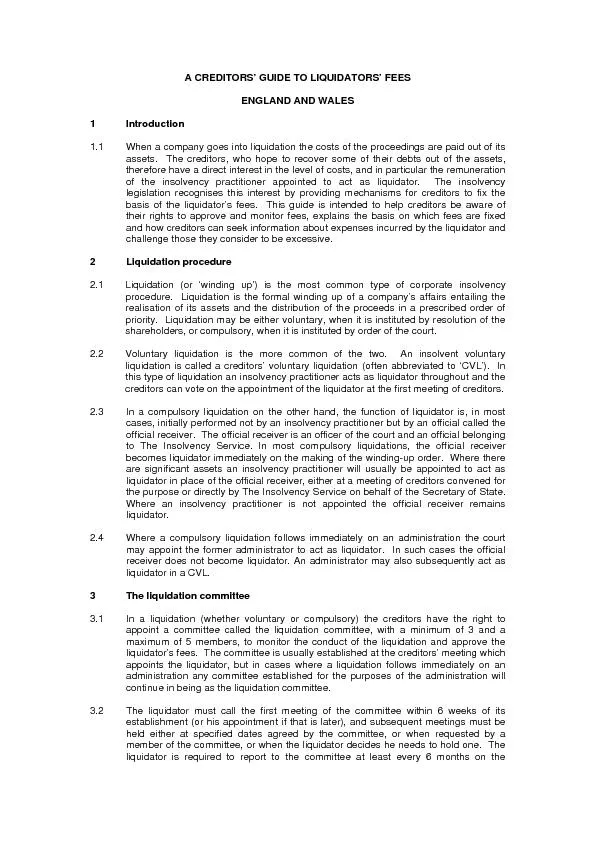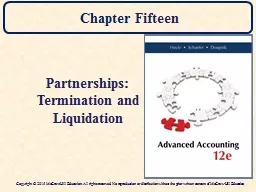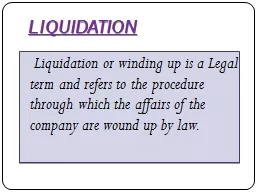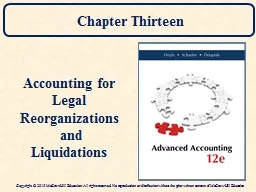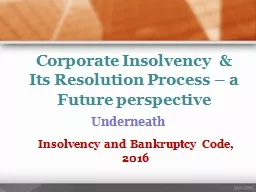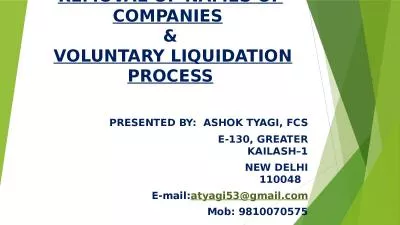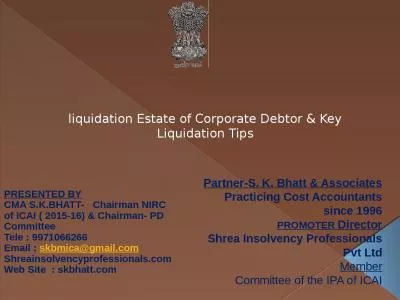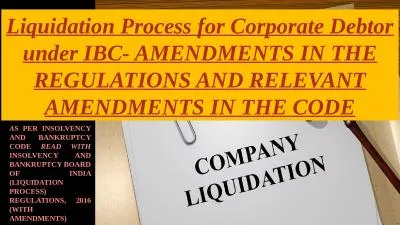PDF-ENGLAND AND WALESIntroduction1.1 When a company goes into liquidation
Author : luanne-stotts | Published Date : 2017-02-02
progress of the liquidation unless the committee directs otherwise This provides an opportunity for the committee to monitor and discuss the progress of the insolvency
Presentation Embed Code
Download Presentation
Download Presentation The PPT/PDF document "ENGLAND AND WALESIntroduction1.1 When a ..." is the property of its rightful owner. Permission is granted to download and print the materials on this website for personal, non-commercial use only, and to display it on your personal computer provided you do not modify the materials and that you retain all copyright notices contained in the materials. By downloading content from our website, you accept the terms of this agreement.
ENGLAND AND WALESIntroduction1.1 When a company goes into liquidation: Transcript
Download Rules Of Document
"ENGLAND AND WALESIntroduction1.1 When a company goes into liquidation"The content belongs to its owner. You may download and print it for personal use, without modification, and keep all copyright notices. By downloading, you agree to these terms.
Related Documents

